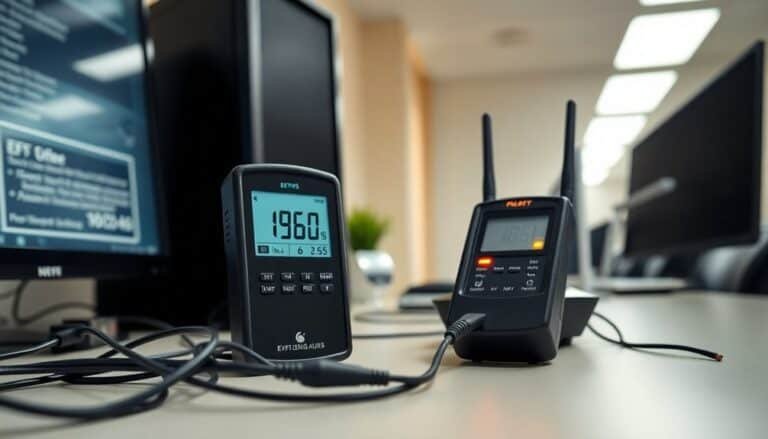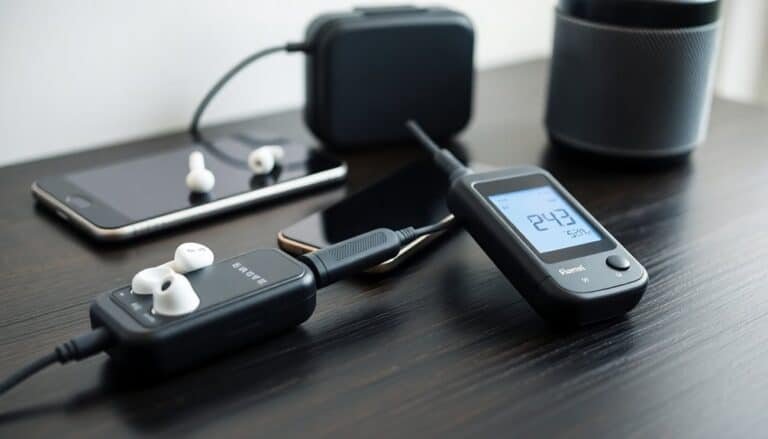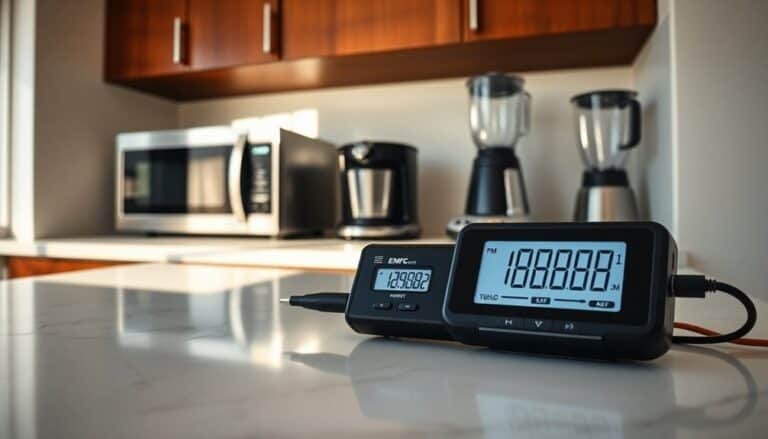Using a Gaussmeter to Measure EMF
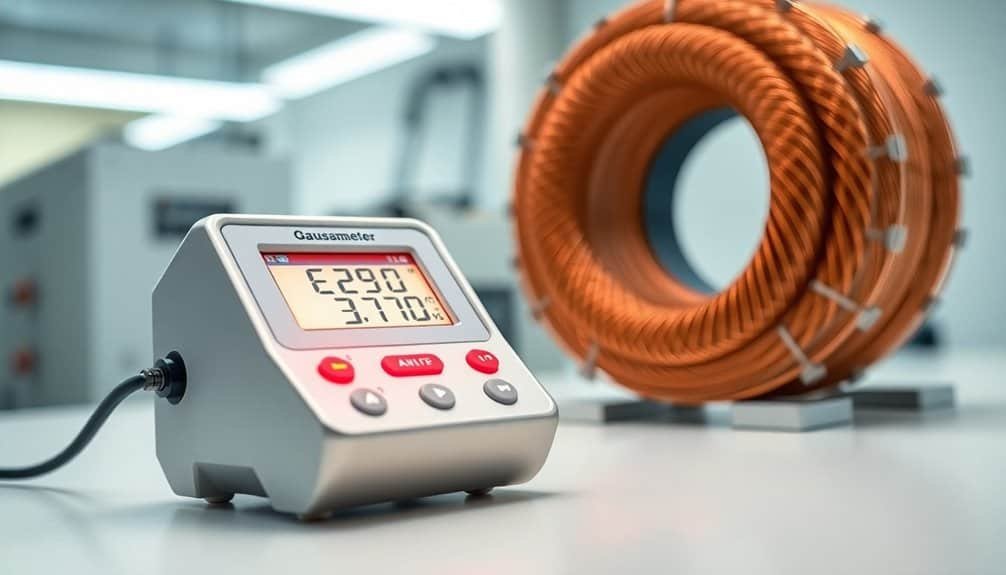
A gaussmeter measures electromagnetic fields (EMF) using the Hall effect, where the probe detects magnetic fields and generates a proportional voltage displayed by the meter. You can measure both AC and DC fields with high precision depending on the probe type, ensuring proper calibration and alignment beforehand.
Understanding the features and techniques of using a gaussmeter enhances measurement accuracy and safety. This knowledge enables deeper insights into electromagnetic fields.
Disclaimer: As an affiliate, I may collect a share of sales from the links on this page.
Understanding Gaussmeters and Their Functionality
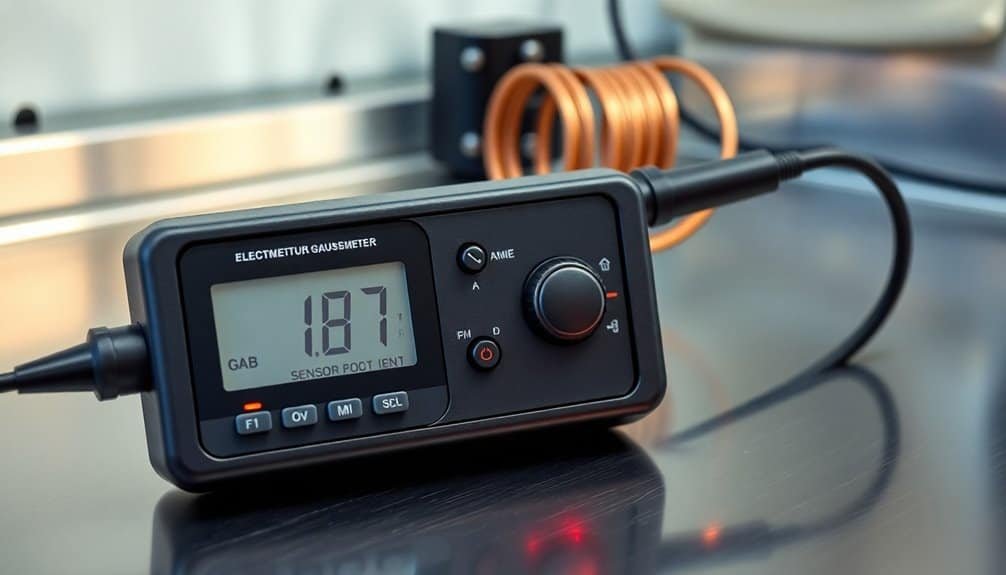
Gaussmeters are essential tools for measuring magnetic fields, combining functionality with precise design. They consist of a Hall probe, a meter, and a connecting cable. You can use them to measure both the direction and intensity of relatively small magnetic fields. These devices operate on the principle of the Hall effect, which allows them to generate measurable voltage proportional to magnetic field strength and current.
Newer models differentiate between AC and DC fields, offering accurate RMS calculations for AC. These devices find applications across scientific, industrial, and safety assessments. For larger fields, you’d typically use a Tesla meter, which measures in Tesla units. Gaussmeters feature flat and axial probes for versatile measurement, ensuring reliability and accuracy in diverse environments and applications.
The Principle of the Hall Effect in Measurement
The Hall effect forms the backbone of many measurement techniques in magnetometry, as it provides a reliable method for detecting magnetic fields.
This phenomenon occurs when a conductor carrying an electric current, placed in a magnetic field, generates a transverse electric field. The interaction between charged particles and the magnetic field induces a voltage across the conductor, known as Hall voltage. This effect arises from the movement of charge carriers in a conductor as they experience a Lorentz force in the presence of a magnetic field. This allows you to measure the magnetic field strength and determine the type of charge carriers. With its precise measurement capabilities, the Hall effect plays an essential role in designing sensors for accurate magnetic field assessments in various applications.
Key Components of a Gaussmeter
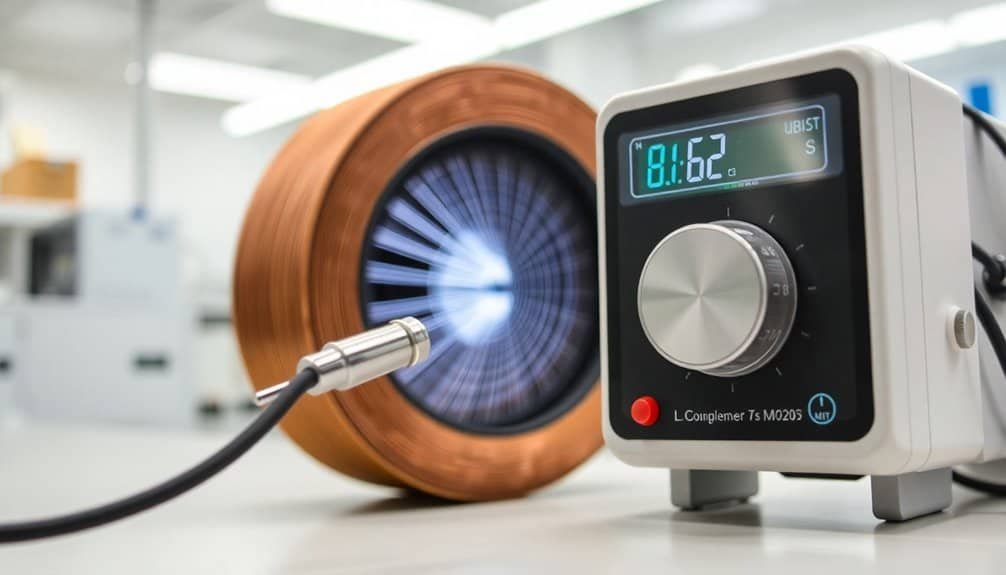
A gaussmeter comprises several key components that work together to measure magnetic field strength accurately.
The Hall probe, essential for measurements, utilizes a Hall generator made from semiconductor materials like indium antimonide, converting magnetic fields into electrical signals. The meter displays this magnetic field strength, indicating changes in Hall voltage.
A cable connects the probe to the meter, facilitating data transmission. Probes can vary in design, being flat or axial, to measure different magnetic fields.
While offering an accuracy range of 0.15% to 2%, modern meters achieve even greater precision, with some capable of 0.075% accuracy. Gauss Meters are commonly used for measuring non-destructive magnetic fields in various applications.
Techniques for Accurate Measurement
Achieving precise measurements with a gaussmeter requires careful attention to several techniques.
First, select the appropriate Hall sensor type to match the magnetic field orientation. Align your probe parallel to the magnetic field for accuracy, placing it centrally on the magnet to minimize variations.
Control environmental factors to reduce external interference, and guarantee your gaussmeter is calibrated before use. Hold the probe steady during measurements, and distinguish between static and dynamic fields.
Wait for readings to stabilize before documenting data. By following these methods, you’ll guarantee accurate, reliable measurements of magnetic field strengths.
Safety Standards and Health Considerations
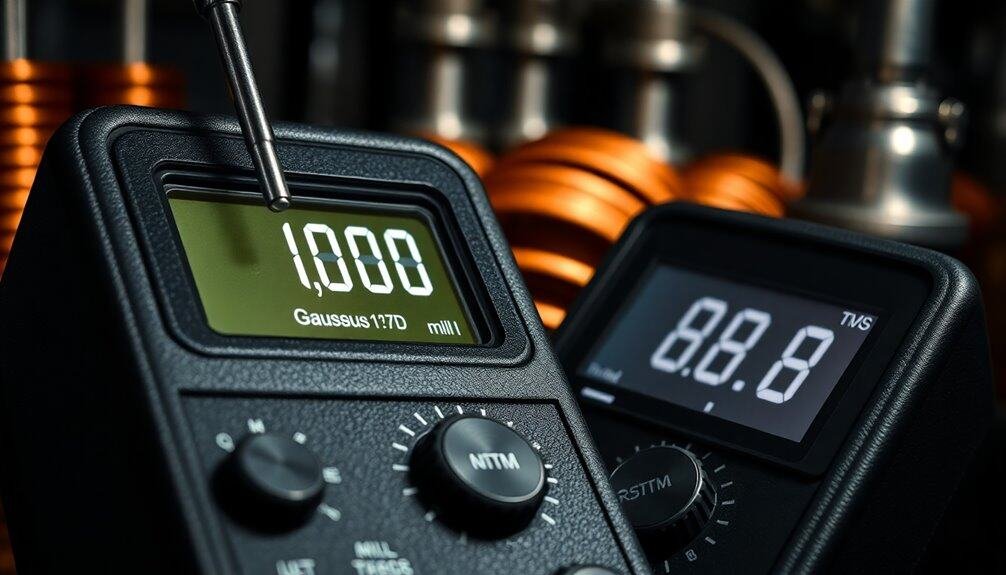
Proper safety measures are crucial when using a gaussmeter to measure electromagnetic fields (EMFs). Follow the ICNIRP guidelines, which set occupational exposure limits at 200 mT for static fields. Familiarize yourself with the IEEE Standard C95.6 for maximum permissible exposure levels, although they serve as recommendations, not regulations. If you work with implanted devices, keep exposure below 0.5 mT. Employ shielding techniques to protect electronic equipment from interference. Regular maintenance of your measurement devices guarantees compliance with safety standards. Stay updated on varying international regulations, as they can differ considerably, affecting your approach to measuring EMFs safely. Additionally, understanding safe EMF levels is essential for ensuring health and minimizing potential risks.
Advantages of Using Gaussmeters
Gaussmeters stand out as essential tools for measuring electromagnetic fields, offering several notable advantages that elevate their utility across various applications.
- Accurate Readings: They provide precise measurements in Gauss (G) or Tesla (T).
- Wide Range of Fields: Gaussmeters measure static, alternating, and pulse magnetic fields effectively.
- Non-Invasive: Measurements are non-destructive, ensuring equipment safety.
- Directional Information: Some models can identify the direction and distribution of magnetic fields.
- Diverse Applications: They’re valuable in physics, electronics, medical testing, and more.
These features make Gaussmeters indispensable for accurate and reliable electromagnetic field assessments.
Practical Applications of Gaussmeters in Everyday Life
In numerous fields, Gaussmeters play an essential role in everyday applications, enhancing safety, performance, and research outcomes.
In industry, they verify magnetic materials meet specifications, enhancing quality control.
Medical applications include calibrating MRI machines and monitoring diagnostic equipment to guarantee safety.
In environmental studies, Gaussmeters identify mineral deposits and measure the Earth’s magnetic field for geological research.
Laboratory settings benefit from their precise measurements in materials science and physics.
Finally, consumers use these devices to measure magnetic fields around electronic equipment, promoting household safety.
Gaussmeters are versatile tools that greatly impact various sectors, promoting efficiency and research integrity.
Frequently Asked Questions
How Do I Calibrate My Gaussmeter Before Use?
To calibrate your gaussmeter, set up your equipment, control the environment, use traceable reference standards, verify readings multiple times, and adjust as necessary. Always document the process for future reference and adhere to safety precautions.
What Batteries Are Compatible With My Gaussmeter Model?
To find compatible batteries for your Gaussmeter model, check your manual for specifications. Most commonly, you’ll need 9V alkaline or rechargeable NiMH batteries. Always verify you replace them with the correct type for peak performance.
Can I Measure Magnetic Fields Indoors and Outdoors?
Can you measure magnetic fields both indoors and outdoors? Absolutely! You can easily capture readings in various environments, although indoor and outdoor conditions may require different considerations for accuracy and safety.
What Are the Limitations of Gaussmeter Readings?
Gaussmeter readings have limitations, including calibration accuracy, sensitivity to environmental factors, and interference from nearby magnetic fields. You need to take into account these factors to guarantee your measurements are reliable and meaningful for your specific application.
How Often Should I Perform Maintenance on My Gaussmeter?
Imagine your lab’s daily data relies on precision; you can’t risk inaccuracies! You should perform maintenance every six months if used frequently, or annually otherwise, strictly following manufacturer guidelines to guarantee reliable operation.
Conclusion
A Gaussmeter provides precise measurements of electromagnetic fields, crucial for many applications. Despite potentially high costs, their accuracy and reliability make them a valuable investment. With the Hall effect and easy usability, Gaussmeters help users understand and reduce electromagnetic exposure. Prioritizing safety and accuracy, they are beneficial for both professional and personal use.


